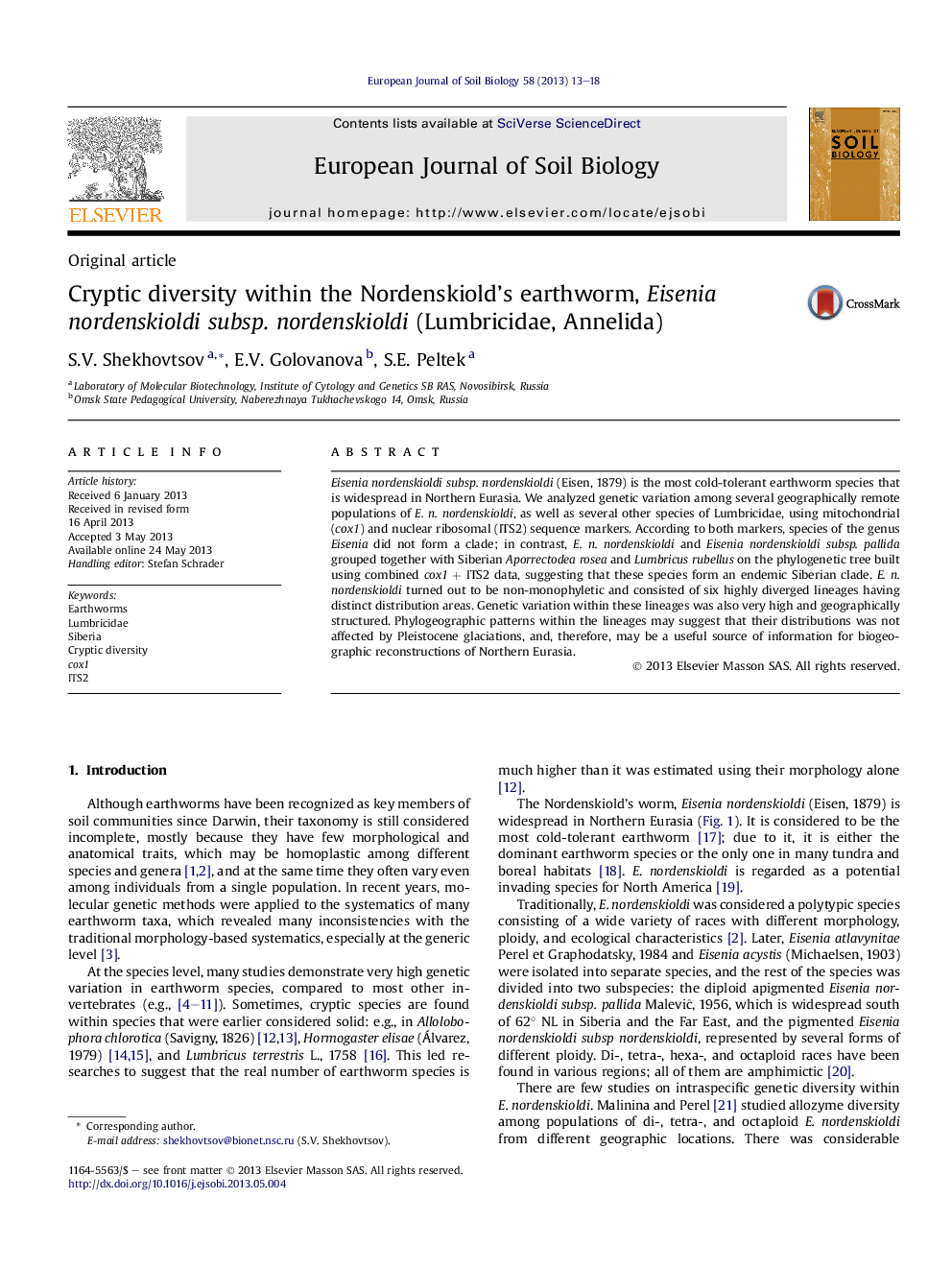| کد مقاله | کد نشریه | سال انتشار | مقاله انگلیسی | نسخه تمام متن |
|---|---|---|---|---|
| 4391920 | 1618134 | 2013 | 6 صفحه PDF | دانلود رایگان |

• E. n. nordenskioldi in Siberia contains six highly diverged genetic lineages.
• All these lineages have distinctive geographical distributions.
• Within-lineage diversity is high and geographically structured.
• E. n. nordenskioldi lineages diverged before Pleistocene.
• Distributions of these lineages may reflect pre-glaciation biogeographic patterns.
Eisenia nordenskioldi subsp. nordenskioldi (Eisen, 1879) is the most cold-tolerant earthworm species that is widespread in Northern Eurasia. We analyzed genetic variation among several geographically remote populations of E. n. nordenskioldi, as well as several other species of Lumbricidae, using mitochondrial (cox1) and nuclear ribosomal (ITS2) sequence markers. According to both markers, species of the genus Eisenia did not form a clade; in contrast, E. n. nordenskioldi and Eisenia nordenskioldi subsp. pallida grouped together with Siberian Aporrectodea rosea and Lumbricus rubellus on the phylogenetic tree built using combined cox1 + ITS2 data, suggesting that these species form an endemic Siberian clade. E. n. nordenskioldi turned out to be non-monophyletic and consisted of six highly diverged lineages having distinct distribution areas. Genetic variation within these lineages was also very high and geographically structured. Phylogeographic patterns within the lineages may suggest that their distributions was not affected by Pleistocene glaciations, and, therefore, may be a useful source of information for biogeographic reconstructions of Northern Eurasia.
Figure optionsDownload as PowerPoint slide
Journal: European Journal of Soil Biology - Volume 58, September–October 2013, Pages 13–18